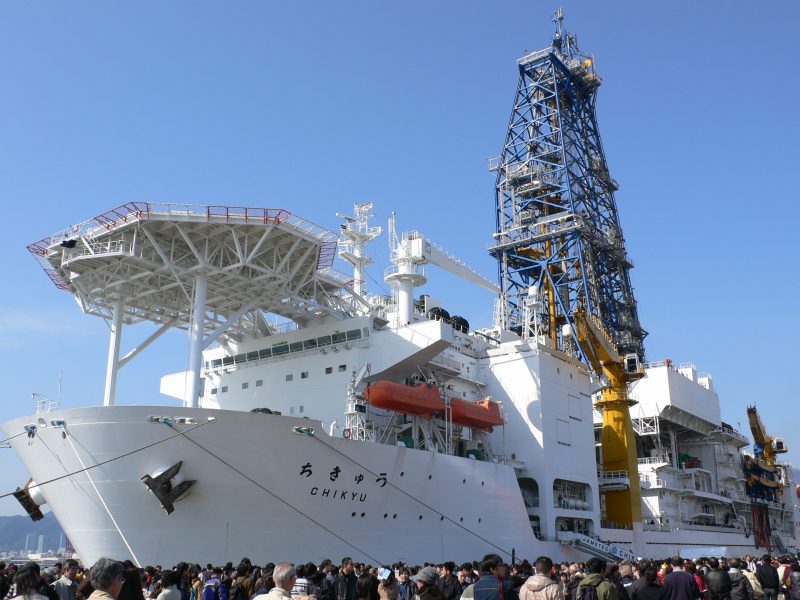Drilling Deep Into the Earthquake Zone
December 12, 2023

Scientists who drilled deeper into an undersea earthquake fault than ever before have found that the tectonic stress in Japan’s Nankai subduction zone is less than expected, according to a study from researchers at the University of Texas Institute for Geophysics (UTIG) and University of Washington.
Their record-breaking attempt took place in 2018 aboard a Japanese scientific drilling ship, the Chikyu, which drilled two miles into the tectonic plate before the borehole got too unstable to continue, a mile short of the fault.
The findings, published in the journal Geology, are a puzzle because the fault produces a great earthquake almost every century and was thought to be building for another big one.
“This is the heart of the subduction zone, right above where the fault is locked, where the expectation was that the system should be storing energy between earthquakes,” said UTIG Director Demian Saffer, who co-led the scientific drilling mission. “It changes the way we’re thinking about stress in these systems.”
Although the Nankai fault has been stuck for decades, the study shows that it is not yet showing major signs of pent-up tectonic stress. According to Saffer, that doesn’t alter the long-term outlook for the fault, which last ruptured in 1946 — causing a tsunami that killed thousands — and is expected to do so again during the next 50 years.
The findings will help scientists home in on the link between tectonic forces and the earthquake cycle and potentially lead to better earthquake forecasts, both at Nankai and other megathrust faults such as Cascadia in the Pacific Northwest.
Back to the Newsletter